Which mid sized tuck to buy for Overlanding?
After a half dozen years of rock crawling, I found myself enjoying the scenic trails more than the technical ones. The trails with great scenery where you can just drive and soak it all it. The more I did those types of trails, the more it dawned on me that I really liked to explore and see the sights less seen. In today’s terminology, this is called Overlanding. Overland Journal describes Overlanding as “self-reliant adventure travel to remote destinations where the journey is the primary goal”.
My first real overlanding trip was to Death Valley with my father and my son back in March of 2018. Our only goals were to just explore Death Valley and make memories with each other.
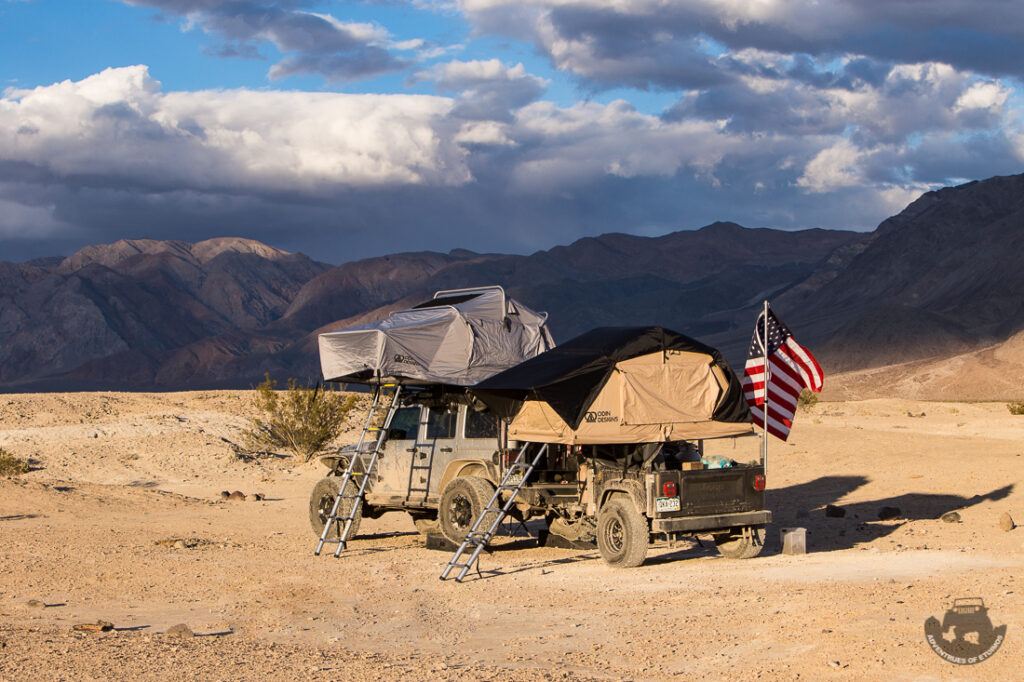
It was a wonderful trip that the three of us will never forget. It did however, point out some drawbacks to the vehicle setup that I had.
The first drawback was space. The JKUR just did not have enough cargo space in it and that made the trip more difficult then it needed to be. We were constantly having to rearrange things to get to other things. The other major drawback was that it was not setup for long distance travelling, it was setup for rock crawling. The gearing was not well suited for long highway trips to the areas we wanted to explore and other modifications made the ride harsher then it needed to be. Not to mention that it got very poor gas mileage.
I knew the JKUR was always going to have these drawbacks unless I rebuilt it, e\and even then it would not solve the space issue. That lead me to start researching trucks. A truck would solve the space issues with the addition of the bed and would allow to me to build (or not build) various parts of it strictly for Overlanding. I had always liked the Tacoma and I was really interested in the ZR2 diesel. The former had good looks and a solid Overlanding presence, the latter a trick suspension, lots of torque, and should have a great fuel range.
Toyota Tacoma TRD Pro

The Toyota Tacoma is regarded as one of the best overlanding trucks out there. It has a ton of aftermarket parts, allowing you to set it up to your needs and it is quite capable offroad. As much as I wanted to love the Taco, test driving it left a lot to be desired in the seating department. The seats seemed really close to the floor, pushing my knees up rather high. Without the ability to adjust the seat up or down, it was just not very comfortable for me. I could not imagine putting in 10+ hour days behind the wheel sitting like that. The transmission also left me feeling oh-hum. Even on the short test drive it seemed to be hunting for which gear it should be in on the smallest of hills. The other concern was the feedback I was getting from owners on how it towed. The chief complaint was just a lack of power and gearing. We did not own an offroad trailer at the time, but one was in our future for sure. Even with these three “major overlanding issues”, the rugged good looks of a Cement Gray TRD PRO with blacked out badges almost got the better of me at one of the dealerships.
Chevy Colorado ZR2 Bison
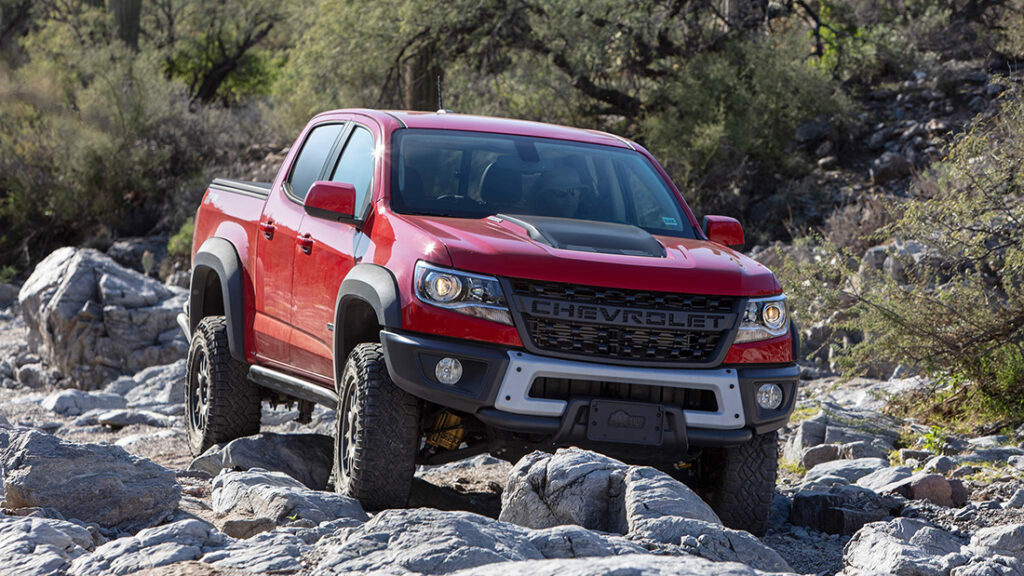
When you are thinking about an Overlanding truck, there are three main areas to consider: Offroad capabilities, cargo space, and fuel range. The Chevy Colorado ZR2 diesel checked off all of those boxes. It was very smooth on road with the high end suspension that comes stock on it. That same suspension was really good offroad soaking up the bumps that you often fine while Overlanding. It also looked pretty good as well (if not as rugged as the Taco). The major downfall to it was the lack luster interior and relatively low level of support from the aftermarket. The interior just looked and felt cheap to me and needed a major update. There were rumors that it might be getting an interior upgrade in the next couple of years, so it did not make much sense to buy one at the time.
With both the Taco and the ZR2 needing some updates to get them to where I would like them to be, I was able to sit tight until the new Jeep Gladiator came out. Being a Jeep guy, I was more than willing to hold out to see what the Gladiator had to offer. I knew it would have the offroad chops needed to conquer the terrain I’d be traversing and being a mid-size truck it should have the cargo space I needed. The two unanswered questions about the Gladiator were the cost and the fuel range.
Jeep Gladiator Rubicon
The Jeep Gladiator was first released in 2019 which gives it a little bit of a head start against the other two. The interior is the most up to date out of the three and it knew what offroad specs it needed to best in order to come out on top of the competition. In it’s stock form, the Gladiator leaves a little to be desired in the looks department. The dimensions are just off. It is too long for it’s height. But when you put 35” or larger tires on it or add a little bit of a lift, it really starts to look the part. Coming from Jeep, it was no surprise that the Gladiator was very capable offroad. What was somewhat of a surprise was that it had the best tow rating and payload rating of all three. It also fell right in between the Taco and Bison for fuel range. That is rather impressive considering it is basically a rolling brick. Great offroad ability, good looks with larger tires, and not too shabby fuel range meant the Gladiator was going to be a serious contender for my money. Speaking of money, it is the more expensive of the three trucks, but not by a lot once you start to option them out some.
With all three mid-sized offroad trucks available in 2019, it was time for me to do some serious comparison between them to see which would be right for me.
Rubicon vs. TRD Pro vs. ZR2 Bison Specs
| Gladiator Rubicon | Tacoma TRD Pro | ZR2 Bison Diesel | |
| Base Cost | $47,370 | $46,665 | $51,645 |
| Approach Angle | 43.4° | 35° | 30° |
| Break-over | 20.3° | 23.9° | 23.5° |
| Departure Angle | 26° | 19.1° | 23.5° |
| Ground Clearance | 11.1″ | 9.4″ | 8.9″ |
| Max Payload | 1,600 lbs | 1,155 lbs | 1,190 lbs |
| Max Towing | 7,000 lbs | 6,400 lbs | 5,000 lbs |
| Wheelbase | 137.3″ | 127.4″ | 128.5″ |
| Length | 218.1″ | 212.3″ | 212.7 |
| Width | 73.8″ | 75.2″ | 76.7″ |
| Height | 73.1″ | 71.6″ | 72.2″ |
| Bed Length | 60″ | 60″ | 61.7″ |
| Curb Weight | 5,050 lbs | 4,445 lbs | 5,012 lbs |
| Horsepower | 285 | 278 | 181 |
| Torque | 260 | 265 | 369 |
| Combined MPG | 19 mpg | 20 mpg | 19 mpg |
| Fuel Tank Size | 22g | 21.1g | 21g |
| Est. Fuel Range | 418 | 422 | 399 |
From a purely statistical stand point, the Jeep Gladiator Rubicon just barely squeaks out a win over the TRD Pro. Surprisingly, the Bison does not stack up to these two stat wise. The Gladiator is the king in the off road stats while the TRD Pro wins in the size department (which is also a slight loss on some of the interior space). In the aftermarket support department the Tacoma has the upper hand for overlanding parts, but the Gladiator has only been out for a short while. It is also a decedent of the mighty Jeep Wrangler, the “Lego of the vehicle world”, so I’m sure it will catch up in another year or two.
For me and my money, when you take into account the Rubicon’s front and lockers, lower craw ratio and solid axles, it is really hard to beat as a platform to build an Overlanding vehicle on. It can take on just about any terrain you might throw at it, gets reasonable gas mileage for this type of vehicle, and drives nicely on the pavement as well.


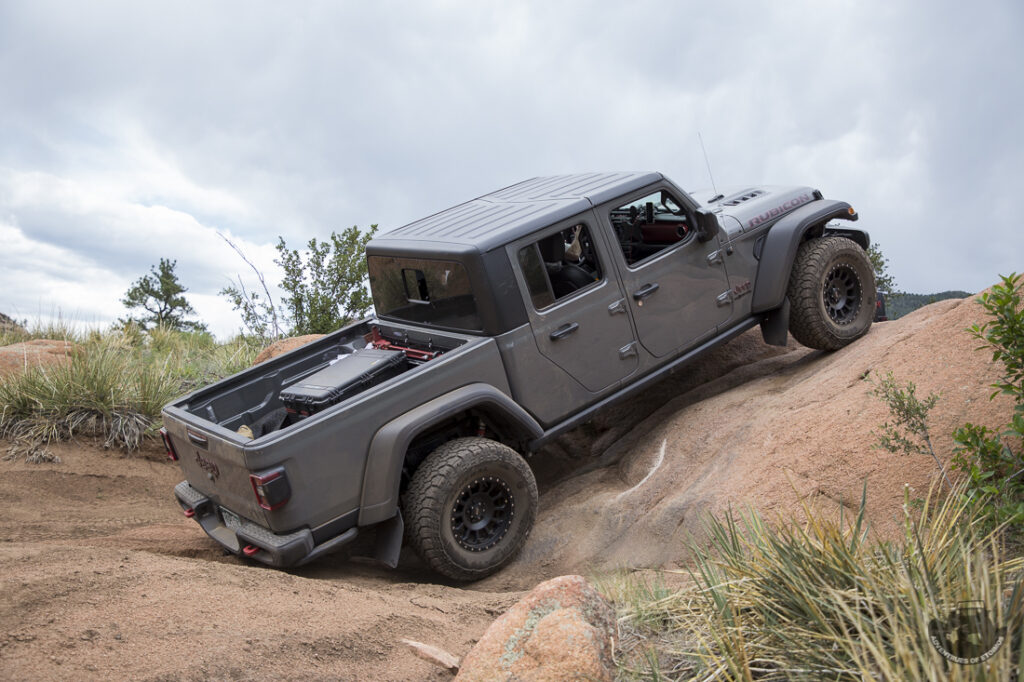
The Gladiator is not all roses as an overlanding vehicle though. The bed size is a little small, especially the bed depth of only 18″. A fridge will not fit back there with a tonneau cover on. The interior is a little tight, but that is an issue on any mid-sized truck. It could also benefit from a little better fuel range. The bed size can be helped with a topper or other aftermarket covers and the fuel range can be addressed with an extended fuel tank or jerry cans. The soon to be available diesel version might solve the short-ish fuel range straight from the factory.
When you pair the Gladiator with an offroad trailer that is as capable as it is, like the Off Grid Trailer Expedition 2.0, you have a combo that is near impossible to beat!



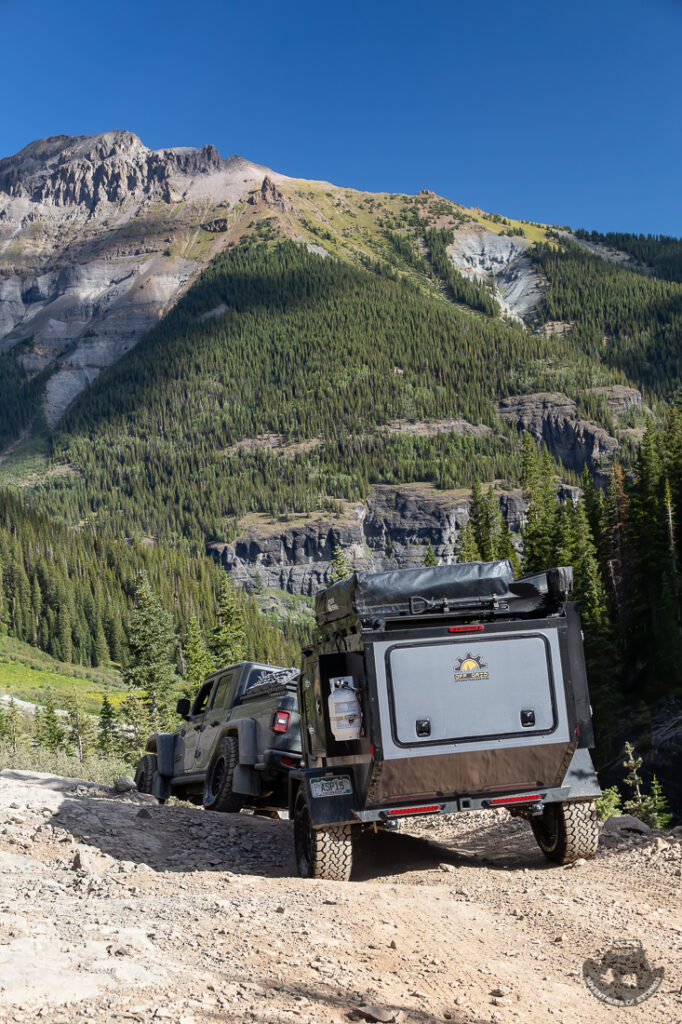
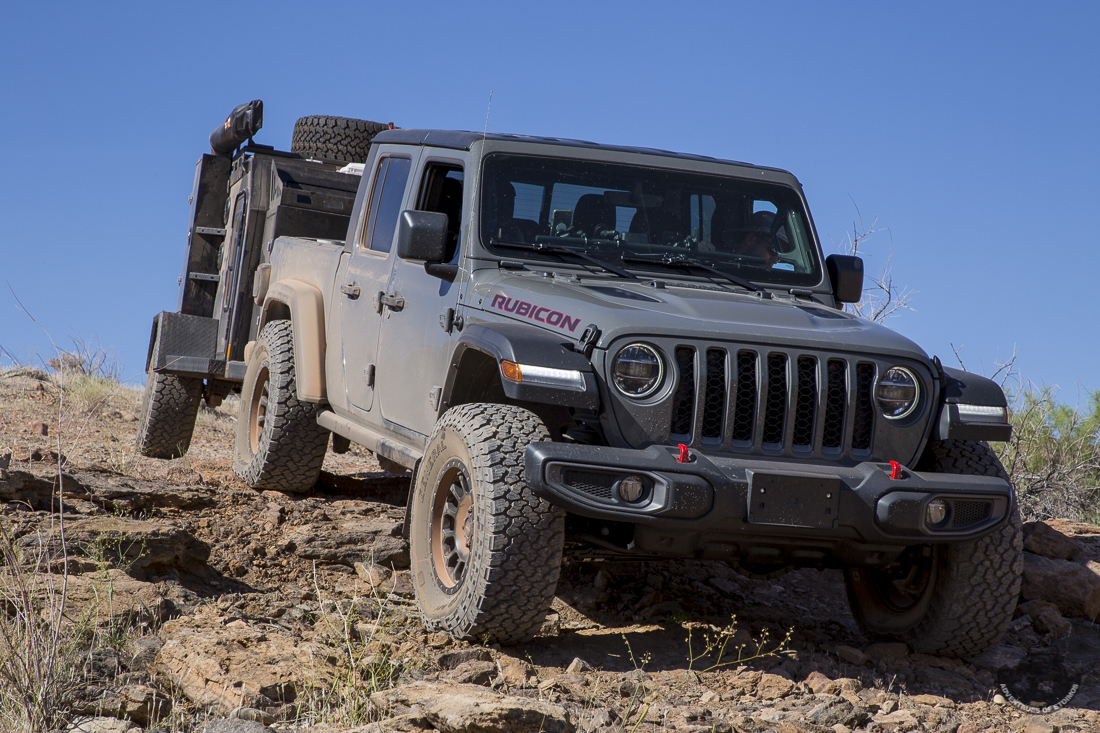



Leave a Reply